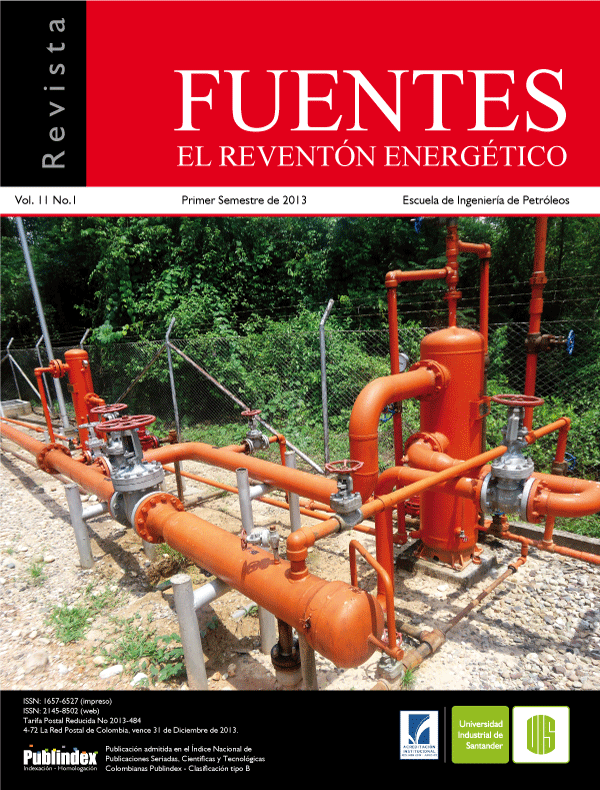Publicado 2013-11-06
Palabras clave
- Non-newtonian fluids,
- Naturally-fractured reservoirs,
- Conventional technique
Cómo citar
Resumen
Conventional oil reserves are coming to an end, then, some unconventional sources, such as heavy oil, are being the aim of oil companies. Most of heavy oils, drilling fluids and fracturing fluids behave as non-Newtonian and these fluids are erroneously approximated by Newtonian fluid flow models.
Currently, there are no mathematical expressions for the application of the straight-line conventional analysis method for the interpretation of pressure tests in heterogeneous or naturally-fractured occurring formations (dual porosity) which are saturated by a non-Newtonian pseudoplastic fluid. The literature includes an analytical solution for predicting the behavior of the pressure in dual porosity reservoirs containing a non-Newtonian fluid; this solution was subsequently used to interpret the well-pressure data using the pressure and pressure derivative log-log plot without employing type-curve matching. None commercial software includes up to date such analytical solution.
Several expressions to complement the conventional straight-line method are presented in this work so pressure tests in naturally fractured reservoirs with a non-Newtonian power-law fluid can be interpreted. This is accomplished mainly by estimating the interporosity flow parameter and dimensionless storage coefficient. The developed equations were successfully tested using well pressure tests reported in the literature. Very good results were obtained from the worked examples when compared to the reference values.
Descargas
Referencias
2. ESCOBaR, F.H., ZaMBRaNO, a.P, GiRaLDO, D.V., CaNTiLLO, J.H. “Pressure and Pressure Derivative analysis for Non-Newtonian Pseudoplastic Fluids in Double-Porosity Formations”. CT&F. 2011, vol. 5, núm 3, p. 47-59.
3. WaRREN, J., ROOT, P. J. The Behavior of Naturally Fractured Reservoirs. Society of Petroleum Engineers. 1963, p. 245-255.
4. iKOKu, C. u., et al. “Transient Flow of Non-Newtonian Power-Law Fluids in porous Media”. Society of Petroleum Engineers Journal. 1979, vol. 19, núm 3, p. 164-174.
5. iKOKu, C.u. 1979. “Practical application of Non-Newtonian Transient Flow analysis”. Paper SPE 8351. SPE annual Technical Conference and Exhibition, (23-26 September 1979). 1979, p. 23-26.
6. iKOKu, C.u., RaMEY, H.J. Jr. “Wellbore Storage and Skin Effects During the Transient Flow of Non-Newtonian Power-law fluids Through in Porous Media”. Society of Pretroleum Engineering Journal. 1980, vol 20, núm 1, p. 164-174.
7. LuND, O., iKOKu, C.u. “Pressure Transient Behavior of Non-Newtonian/Newtonian Fluid Composite Reservoirs”. Society of Pretroleum Engineering Journal. 1981, vol 21, p. 271-280.
